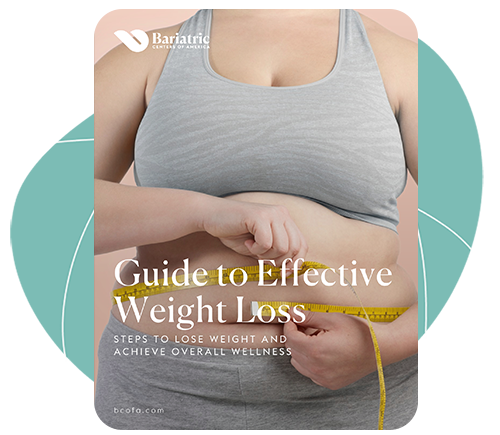
When embarking on a journey to better health and weight loss, it's essential to understand the various types of body fat that can accumulate in our bodies. Not all fat is created equal, and knowing the differences can help you make informed choices for your well-being.
Types of Body Fat
1. Subcutaneous Fat:
Subcutaneous fat, often referred to as "pinchable fat," is a type of body fat located just beneath the skin. It serves several essential functions, including insulation to regulate body temperature and providing cushioning and protection for the underlying muscles and bones. Subcutaneous fat is the fat that we can typically see and feel when we pinch our skin, but it is generally less harmful than visceral fat, the deep abdominal fat surrounding our organs. While excess subcutaneous fat can affect our appearance, it is not as strongly associated with the health risks posed by visceral fat. Nevertheless, maintaining a healthy balance of subcutaneous fat is still important for overall well-being and aesthetics.
2. Visceral Fat:
Visceral fat, sometimes referred to as "belly fat," is a type of body fat that accumulates deep within the abdominal cavity, surrounding vital organs like the liver, pancreas, and intestines. Unlike subcutaneous fat, which lies just beneath the skin and is pinchable, visceral fat is not visible and is often described as "hidden fat."
What makes visceral fat particularly concerning is its strong association with numerous health risks. Excess visceral fat is a major contributor to chronic conditions, which we will discuss below. Proper management and reduction of visceral fat through lifestyle changes are crucial for improving overall health and reducing the risk of these serious medical conditions.
3. Brown Fat:
Brown fat, also known as brown adipose tissue (BAT), is a unique type of fat found in humans with a distinct purpose. Unlike white fat, which stores energy, brown fat is specialized in generating heat by burning calories, a process known as thermogenesis. Its primary function is to help regulate body temperature and maintain warmth, especially in cold conditions. Brown fat contains a high number of mitochondria, the cell's energy powerhouse, which gives it its characteristic brown color and efficient calorie-burning capacity. Research into brown fat has shown its potential in weight management and metabolic health, making it an intriguing area of study in the quest for healthier living.
4. White Fat:
White fat, also known as white adipose tissue, is the most prevalent type of fat in the human body. Its primary function is to store energy in the form of triglycerides, which can be utilized when the body needs additional fuel. White fat is distributed throughout the body, with some areas having a higher concentration, such as the abdomen and thighs. Excessive accumulation of white fat, especially in visceral depots (abdominal fat), is associated with obesity and an increased risk of various health conditions, including heart disease, type 2 diabetes, and hypertension.
5. Intramuscular Fat:
Intramuscular fat is found within muscle tissue. While it's necessary for muscle function, excessive intramuscular fat can hinder muscle performance.
The Dangers of Excess Body Fat
Now that we've discussed the types of body fat, it's crucial to understand the significant dangers associated with excess fat, particularly visceral fat. Excess visceral fat is strongly linked to chronic conditions such as heart disease, diabetes, and certain cancers. This harmful fat can release inflammatory substances that harm your organs.
Furthermore, visceral fat contributes to insulin resistance, making it more challenging for your body to regulate blood sugar levels, ultimately increasing the risk of developing type 2 diabetes. Studies have also consistently shown a strong association between visceral fat and hypertension, which significantly raises the risk of heart disease and stroke.
In addition to these health concerns, having an excessive amount of body fat can lead to atherosclerosis, a condition in which arteries become clogged with fatty deposits. This clogging increases the risk of heart attacks and strokes, underscoring the importance of maintaining a healthy body composition.
Moreover, obesity, often driven by an excess of body fat, is a primary factor contributing to sleep apnea. Sleep apnea is a disruptive condition characterized by repeated interruptions in breathing during sleep, leading to inadequate rest and daytime fatigue. Addressing excess body fat is essential not only for aesthetic reasons but also for safeguarding your overall health and well-being.

Tips for Losing Body Fat
Now that we understand the dangers of excess body fat, let’s focus on some compassionate and supportive tips for shedding those unwanted pounds:
1. Balanced Diet:
Embrace a balanced diet rich in fruits, vegetables, lean proteins, and whole grains. This provides essential nutrients while helping control calorie intake.
2. Regular Exercise:
Incorporate regular physical activity into your routine. It not only burns calories but also helps build muscle, which can boost metabolism.
3. Portion Control:
Be mindful of portion sizes to avoid overeating. Eating slowly can help you recognize when you’re full.
4. Hydration:
Drink plenty of water. Sometimes, our bodies mistake thirst for hunger, leading to unnecessary snacking.
5. Get Adequate Sleep:
Aim for 7-9 hours of quality sleep per night. Poor sleep can disrupt hormone balance and increase cravings for unhealthy foods.
6. Stress Management:
Find healthy ways to manage stress, such as meditation, yoga, or hobbies you enjoy. Stress can lead to emotional eating.
7. Seek Support:
Don’t hesitate to seek support from a healthcare professional or a weight loss program like Live Healthy MD. Having a support system can make a significant difference in your journey.
Remember, losing body fat is a gradual process, and it’s important to be patient and compassionate with yourself. Every step towards a healthier you is a step in the right direction. Your well-being matters, and with dedication and support, you can achieve your weight loss goals and lead a healthier, happier life.












